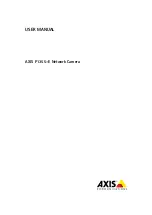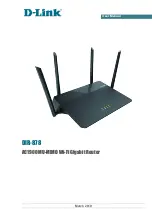
Language
Select your language—
To change language, select one from the drop-down menu. The language of
the browser-based utility will change within five seconds.
Internet Setup
The Internet Setup section configures the router to your Internet connection. This information can be
provided by your Internet Service Provider (ISP).
Internet Connection Type—
Select the type of Internet connection your ISP provides from the drop-
down menu.
o
Automatic Configuration – DHCP
(default)
Keep the default only if your ISP supports DHCP or if you connect using a dynamic IP
address. (This option usually applies to cable connections.)
o
Static IP
Select if you are required to use a fixed IP address to connect to the Internet.
o
PPPoE
Select if you have a DSL connection and your ISP uses Point-to-Point Protocol over
Ethernet (PPPoE).
o
PPTP
Point-to-Point Tunneling Protocol (PPTP) is a service that generally applies to connections
in Europe. If your PPTP connection supports DHCP or a dynamic IP address, select
Obtain
an IP Address Automatically
. If you are required to use a fixed IP address to connect to the
Internet, select
Specify an IP Address
and configure the options that appear.
o
L2TP
Layer 2 Tunneling Protocol (L2TP) is a service that generally applies to connections in Israel.
Note
—Connect on Demand or Keep Alive are options when choosing PPPoE, PPTP and
L2TP. They let you choose whether the router connects to the Internet only as needed
(useful if your ISP charges for connect time), or if the router should always be connected.
Select the appropriate option.
o
Telstra Cable
Telstra Cable is a service that generally applies to connections in Australia.
o
Bridge Mode
Bridge Mode disables all router capabilities and turns the router into an access point. The
router will cease to act as a DHCP server and its built-in firewall as well as the NAT
features will no longer be in effect.
10






































